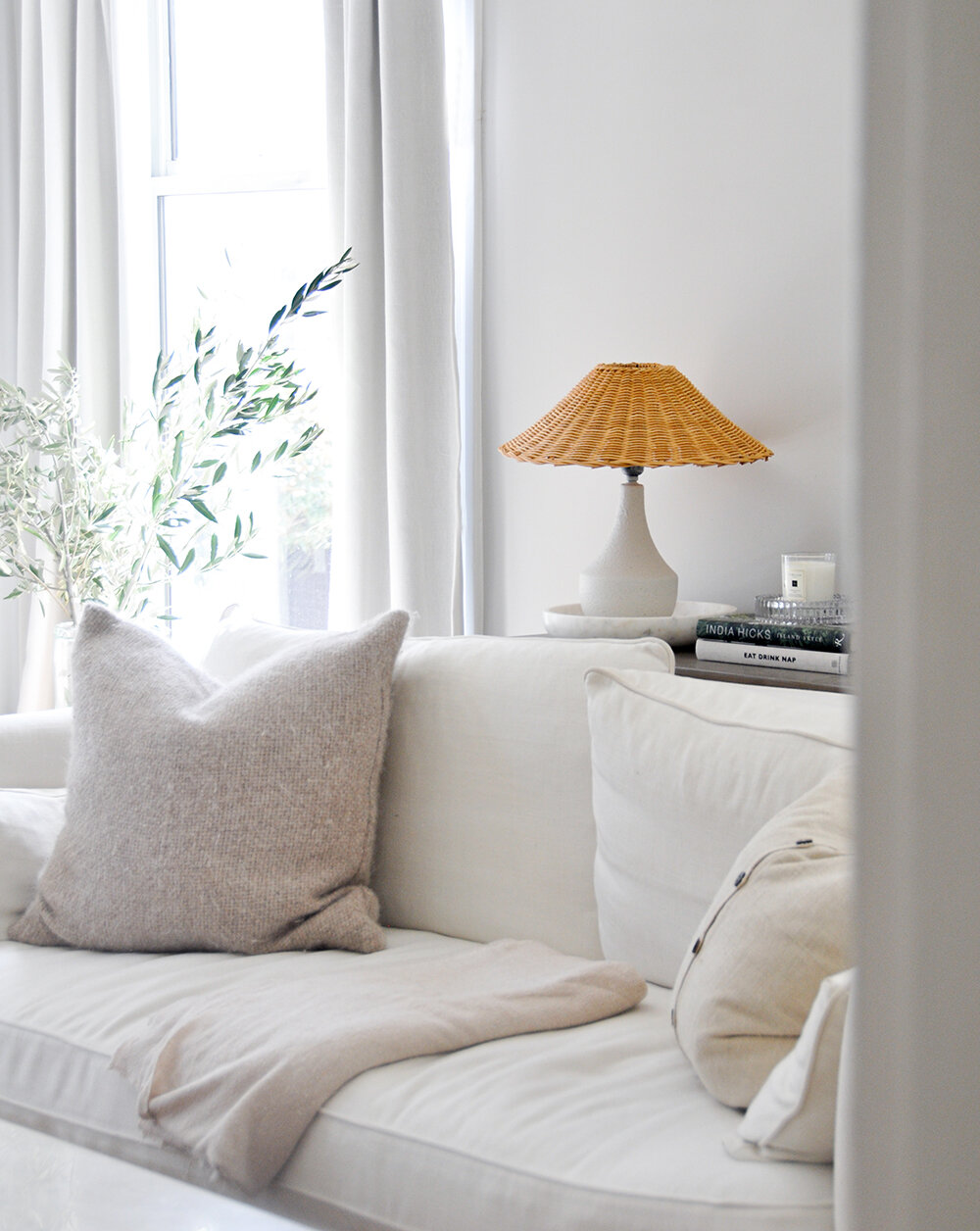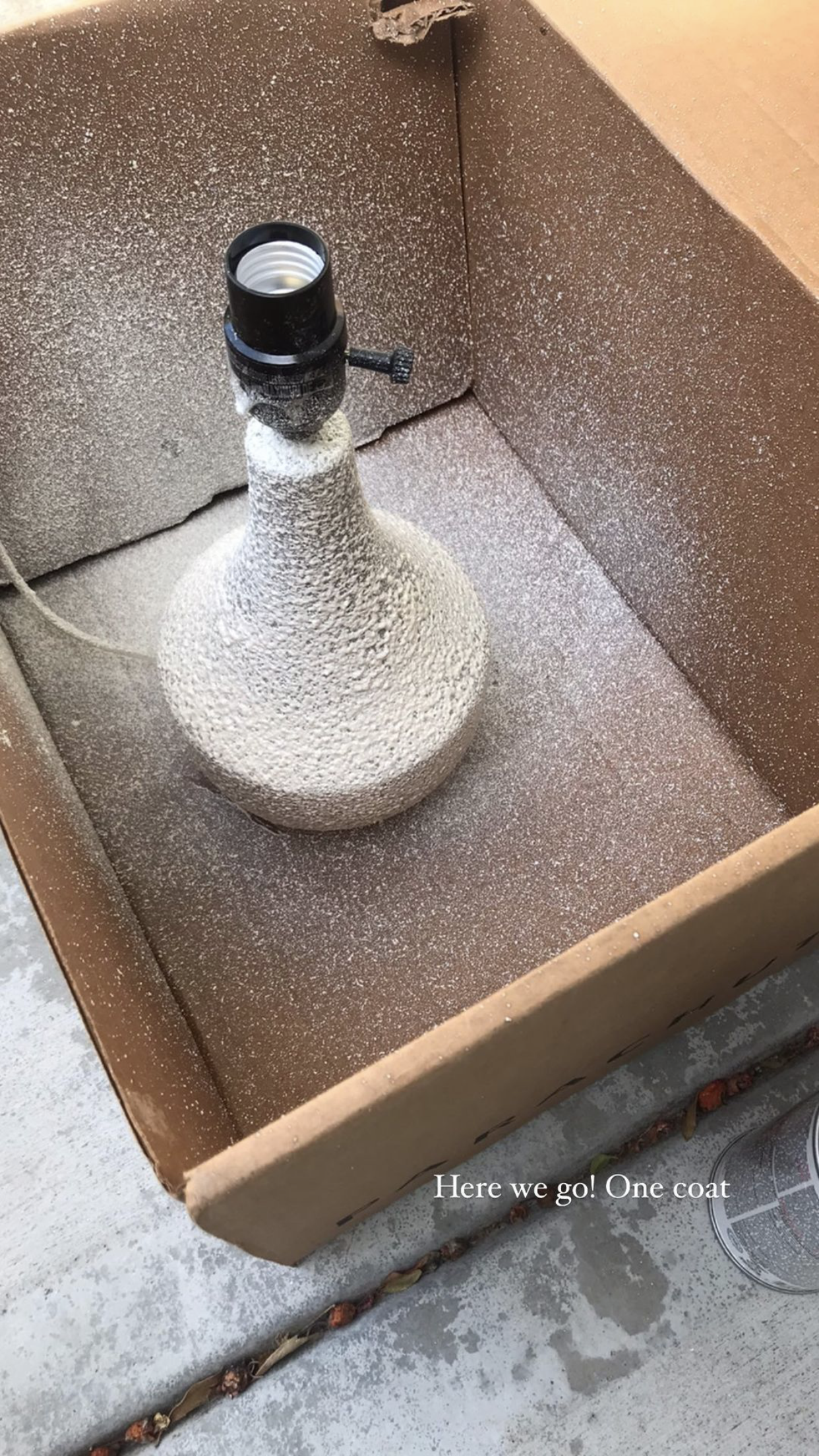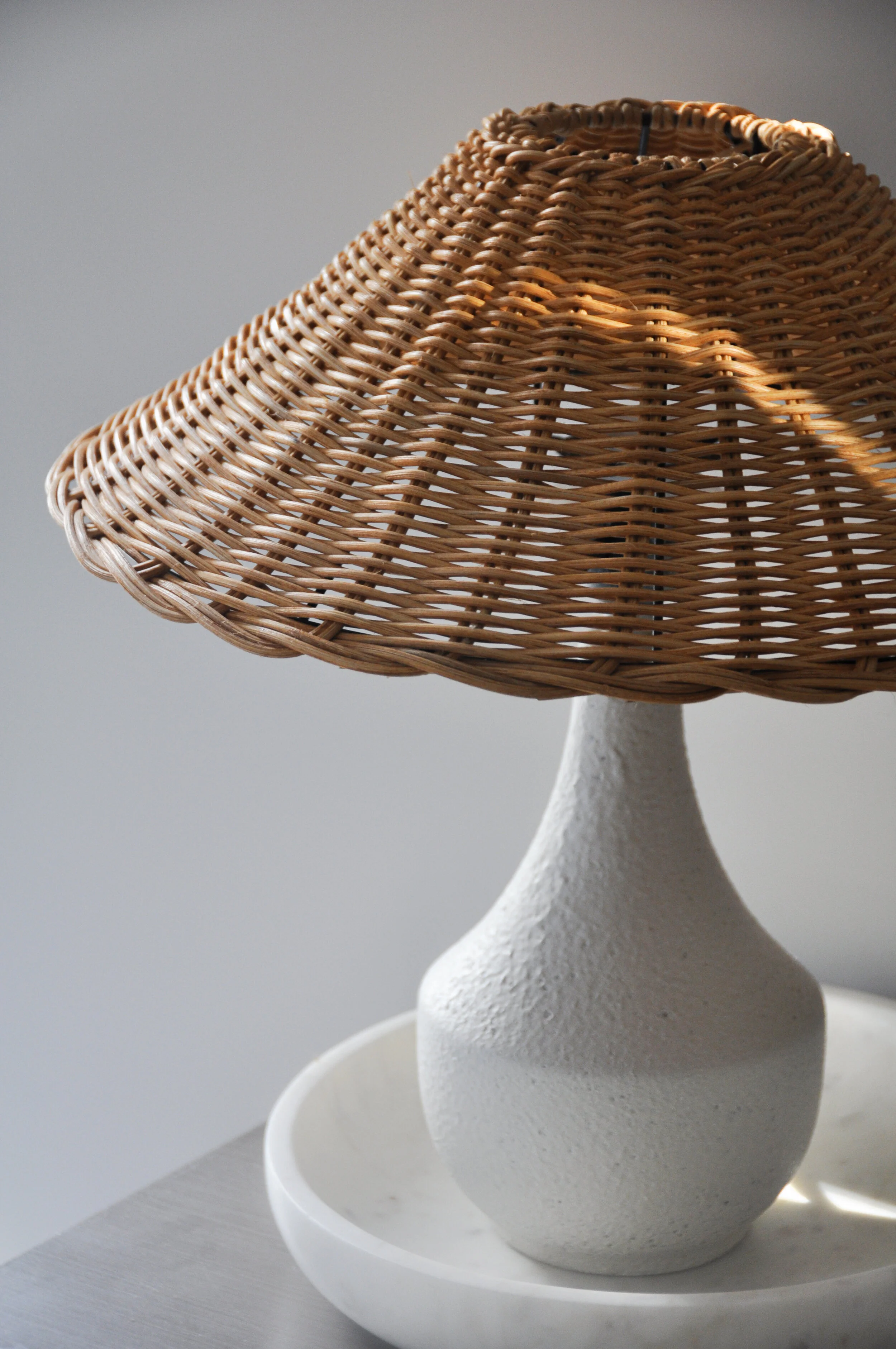The Rattan Lamp Metamorphosis
When I first laid eyes on this rattan lampshade, I knew I had to have it. It was pure love at first sight. I’ve been wanting to bring in a natural texture into our living room for ages now, and this was the perfect find. My mission then became to find the perfect base for a shade of this size, scale and material. It was quite the challenge (with many fails) but here is the story!
I started my lampshade hunt on Etsy–and magically found the shade. It took a little bit of guessing–and luck–as to if it would fit or not, but in the end it was perfect.
I had luck searching vintage, rattan, lampshade and after a few frogs–I found my perfect shade.
As soon as the shade arrived, I knew the hardest part would be finding a base that would work. These “slope” lampshades are tougher to match to a base purely because of their shallow design. Here are a few things to consider when designing with a slope lamp shade:
Shape
You don’t want a base that will show too much metal, or hardware–or sit too low on the shade itself. For these shallow slope shades, I generally like something geometric and simple to help complement the more organic shape of the shade. Rattan is another element that needed to be considered. I needed a base that would help the natural texture of the rattan pop–without taking away from it or being too overpowering. I also didn’t want my space to end up looking super boho–so I needed a streamlined option. Something neutral, stark, and elegant.
Texture and Material
I wanted to contrast the warm rattan with a stark color–white or black was my general direction. When working with rattan (or any natural texture) it’s important to identify the undertones of that natural texture. For example, as soon as the shade arrived, I could tell it had super warm undertones. I wanted to offset these warm tones with a stark white to help give the piece contrast and balance. I also didn’t want a base that was too shiny or modern-looking–which would be an abrupt departure from the natural nature of ratan. Something a bit organic and raw would work best. Think ceramic or clay!
Scale
The scale of the lamp base in relation to the shade is incredibly important. You don’t want a base that is too large for the lampshade or it will look silly and misplaced. Visa versa, a shade that is too big will swallow its base and look too top-heavy. For a slope shade, I recommend veering on the slightly more petite side for your base–so that the shallow slope will appear taller and more elegant.
After a few weeks of searching–I finally remembered this simple little Target lamp I bought for our apartment a few years ago. It was the perfect petite size and had a simple geometric silhouette. I wanted a natural “plaster” material–and at this point, I knew a DIY was in my future. Sadly, the perfect plaster lamps are $$$$.
I took a leap and bought this spray on Amazon. I didn’t want to get my hands dirty with real plaster–nor did I really have the time. I wanted something course and organic–similar to a cement or ceramic material and this ended up being perfect.
It took about 7 coats to get the texture I was going for but I was really happy with the results. I didn’t prime the lamp base or anything–just sprayed it right on there. I left the lamp outside for 3 days to fully dry and air out.
All in all, I’m super thrilled with how everything turned out! I’ll cherish this little lamp forever.




